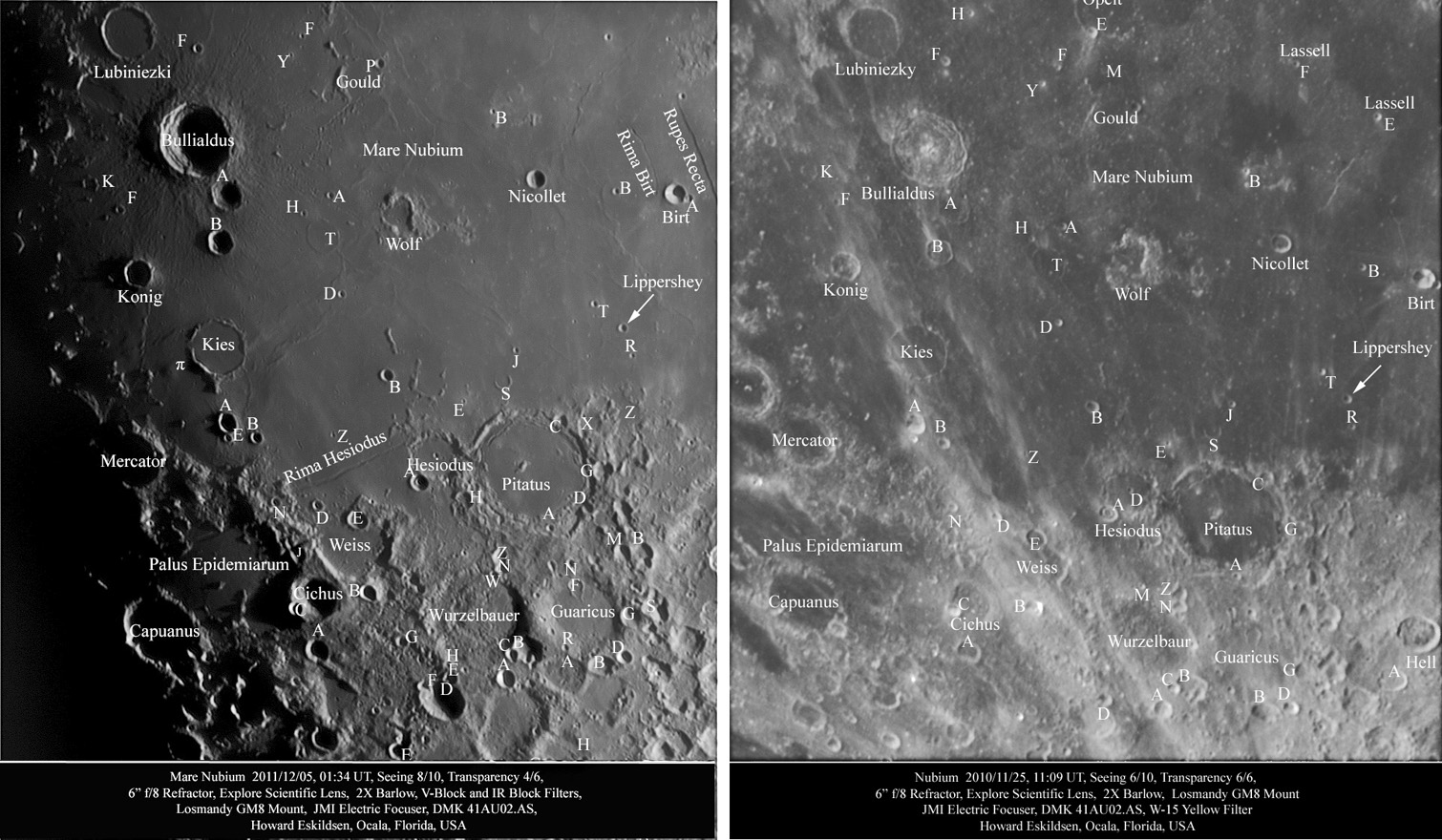June 19, 2012
Names On Pixels

image by Howard Eskildsen, Ocala, Florida
I think it was the Atlas Photographique de la Lune (1896-1910) by Loewy and Puiseux that first published photographic sheets showing
the same area of the lunar surface under multiple illuminations. In 1903 Pickering did also did it in his The Moon, but perhaps no one
else did until 1960 when two noteworthy atlases of vastly different scale appeared. The Kuiper et al Photographic Lunar Atlas arrived
in a hefty red cardboard box weighting many pounds, inside of which were folded dining room table size sheets of paper, each containing four large views of a region on the Moon; sometimes a fifth single sheet was included. Perhaps it isn't surprising that this modern
and influential atlas has not been digitized and made available online. Also in 1960 with little fanfare nor remembrance a Photographic
Atlas of the Moon came from Miyamoto and Matsui of the Kwasan Observatory in Kyoto. At that time when some people fawned over
the Soviet Union space program and seemed to despise the US a prominent British lunar observer claimed that this pleasant little
Japanese atlas was better than Kuiper's giant effort. That was ridiculous but the M&M atlas was handy and had good enough resolution
to be useful - it was where I first saw the Schiller-Zucchius Basin. Alter's Lunar Atlas of 1964 (Dover edition of 1968) also had multiple
images of each region, as did Viscardy's massive Atlas- Guide Photographique de la Lune of 1984. Finally, Kuioer's Rectified Lunar Atlas
and Consolidated Lunar Atlas also had four or more photos taken under different Sun angles. As did the most convenient atlas, The
Hatfield Photographic Lunar Atlas (my version is from 1999). What do all of these have to do with Howard's two pictures? His are labeled
- both of them with names and lettered features. Many of the photographic lunar atlases aren't labeled and none identifies features on high
Sun views. Howard's images - two sheets from a future atlas? - are the best there is for identifying features during Full Moon.
Chuck Wood
Related Links
Rükl plate 54
Yesterday's LPOD: Another Off the Beaten Track Place
Tomorrow's LPOD: A Little Volcanic Center
COMMENTS?
Register, Log in, and join in the comments.



